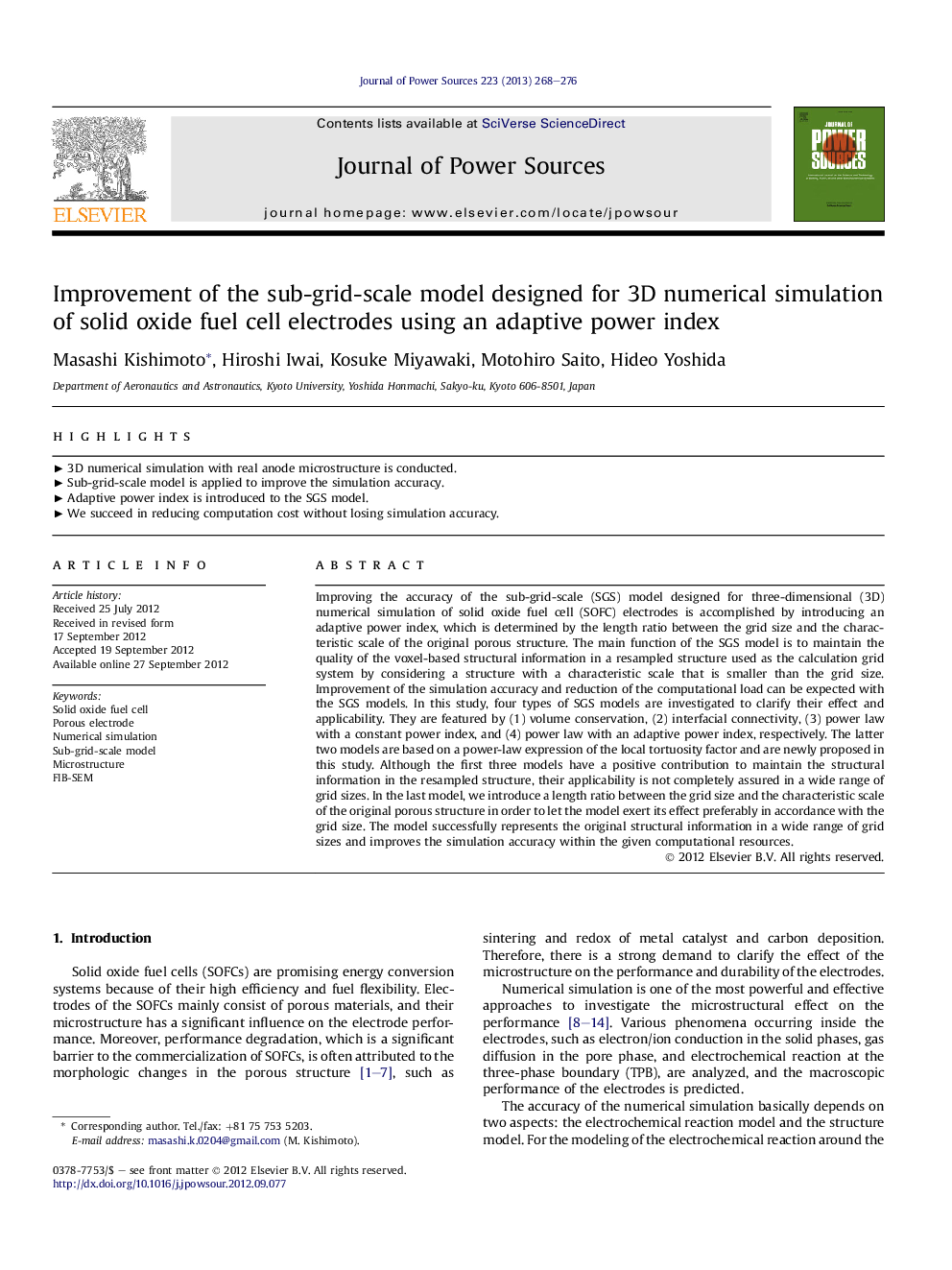| Article ID | Journal | Published Year | Pages | File Type |
|---|---|---|---|---|
| 1287652 | Journal of Power Sources | 2013 | 9 Pages |
Improving the accuracy of the sub-grid-scale (SGS) model designed for three-dimensional (3D) numerical simulation of solid oxide fuel cell (SOFC) electrodes is accomplished by introducing an adaptive power index, which is determined by the length ratio between the grid size and the characteristic scale of the original porous structure. The main function of the SGS model is to maintain the quality of the voxel-based structural information in a resampled structure used as the calculation grid system by considering a structure with a characteristic scale that is smaller than the grid size. Improvement of the simulation accuracy and reduction of the computational load can be expected with the SGS models. In this study, four types of SGS models are investigated to clarify their effect and applicability. They are featured by (1) volume conservation, (2) interfacial connectivity, (3) power law with a constant power index, and (4) power law with an adaptive power index, respectively. The latter two models are based on a power-law expression of the local tortuosity factor and are newly proposed in this study. Although the first three models have a positive contribution to maintain the structural information in the resampled structure, their applicability is not completely assured in a wide range of grid sizes. In the last model, we introduce a length ratio between the grid size and the characteristic scale of the original porous structure in order to let the model exert its effect preferably in accordance with the grid size. The model successfully represents the original structural information in a wide range of grid sizes and improves the simulation accuracy within the given computational resources.
► 3D numerical simulation with real anode microstructure is conducted. ► Sub-grid-scale model is applied to improve the simulation accuracy. ► Adaptive power index is introduced to the SGS model. ► We succeed in reducing computation cost without losing simulation accuracy.
